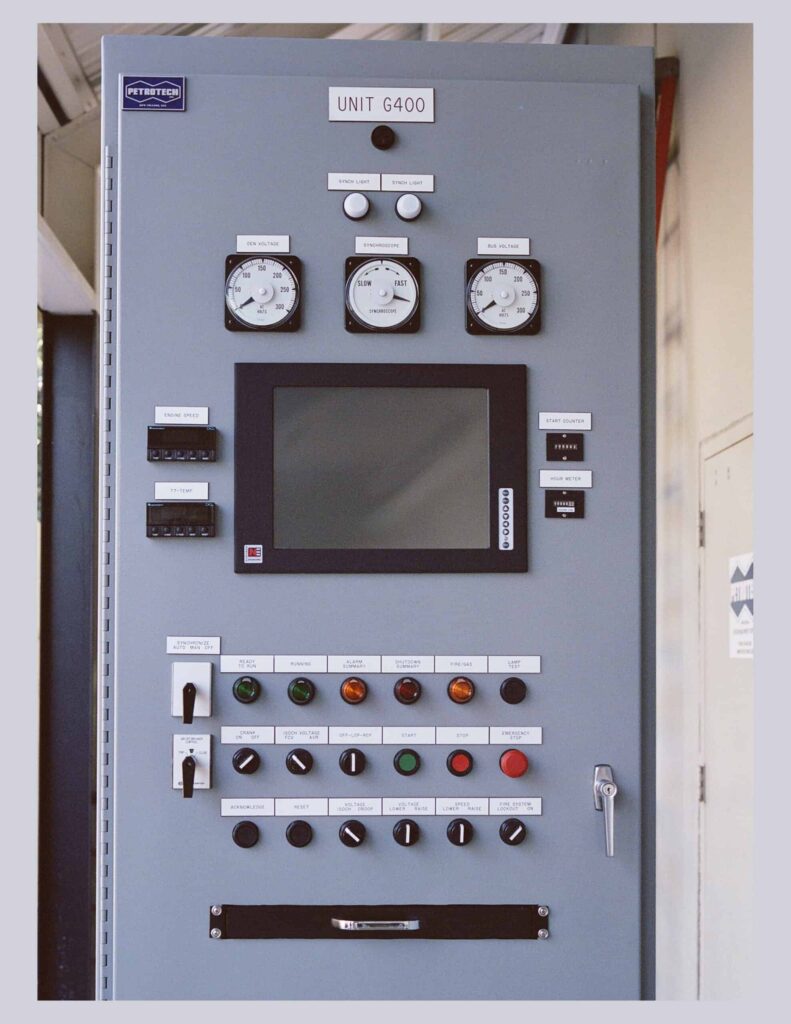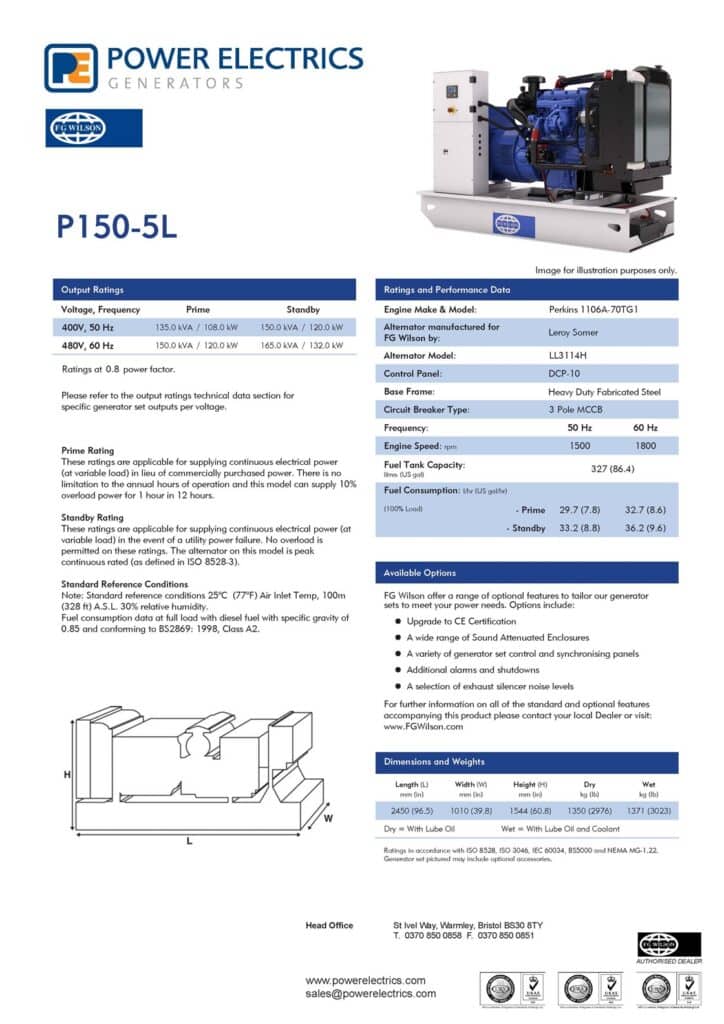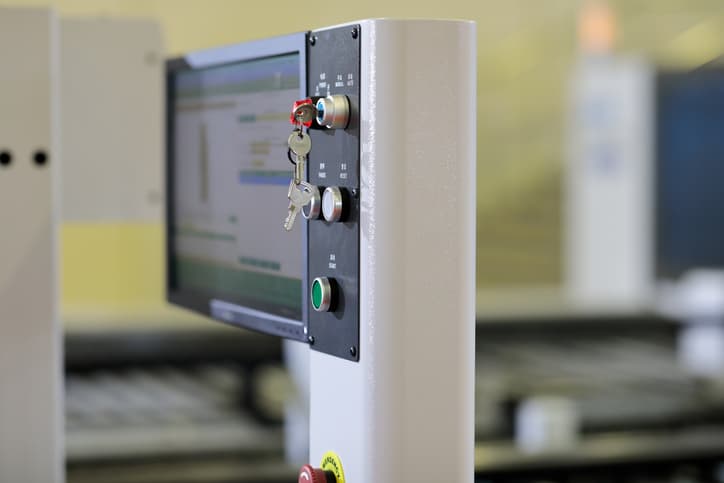
How a Generator Control Panel Works
A generator control panel works by displaying key status information and the ability to make adjustments via an interface.
The interface allows a user to monitor, manage, read codes, and regulate a generator. It links to several components, providing real-time feedback on the generator’s operation. This article explores the inner workings of a generator control panel.
How Does a Generator Control Panel Work?
A generator control panel typically works via a user interface that allows for data collection and process control.
User interface
Some control panels have microprocessors that enable autonomous operation, and some allow online access facilitating hands-free management. However, all control panels comes with a user interface that provisions manual generator, known as a a human-machine interface (HMI).
One of the key points of a control panel is data collection.
Data collection and processing
The module receives real-time information from the sensors placed at strategic components and sends this information to the microprocessors. The microprocessors then get to work analyzing and interpreting the data.
They make decisions based on pre-set parameters and adjustments where appropriate. For instance, if the generator overheats due to overspeed, the microprocessor will reduce running speed to ease the load.
Alternatively, the microprocessor might send a distress signal to the operators or shut it down if the issue is beyond its control. For example, if the cause of the overheating is high coolant temperature, it will shut it down.
Communication
The control module is at the epicenter of communication, receiving and instigating communication within the unit and to the operator. A generator control panel’s communication module sends information to the operator or receives instructions from the operation and sends it to the microprocessor to instigate the implementation.
Safety
A generator’s control panel keeps the unit safe by instigating shutdown procedures in an emergency. For instance, if the unit detects catastrophically low oil pressure or voltage drop, it will shut down the generator and set off an alarm or notify the operator.
Transition power
When the primary power source fails, most modern and large generators have an Automatic Transfer Switch (ATS). This automatically starts and transfers the power source to the generator, ensuring an uninterrupted loss of power.
Specifications and Regulations
Specifications
The product specifications contain important information crucial to the smooth operation of the generator. How a generator control panel works can be defined by several key parameters:
- Prime Rated Power: Represents the amount of power the generator is capable of producing when set to “unlimited run time” mode. “Standby rating” refers to the amount of power produced during a short amount of time.
- Engine speed and frequency: The frequency of a generator can be either 50 or 60 Hz. 50 Hz is more common in Europe, while 60 Hz is more prevalent in the US. The generator’s frequency determines its engine speed.
- Consumption and tank capacity: The spec sheet will provide the fuel tank capacity and consumption figures when it’s running at 100% load in both prime and standby modes.
The specs sheet also contains other information such as the model number, engine make and model, and alternator model and manufacturer.

Customer specifications may also specify redundancy requirements, hazardous area classifications, and other requirements for the control panel.
Regulations
The National Electric Code (NEC) Article 701 provides regulations legally requiring the installation of standby power systems in areas where a loss of power could endanger people’s lives, such as hospitals, wastewater treatment facilities, and military bases.
A government authority having jurisdiction (AHJ) will inform you if your establishment must adhere to this regulation. After that, the AHJ will inspect it to ensure compliance.
Some states, such as Florida and Louisiana, extend this requirement to other forms of businesses. The requirements affect motor fuel facilities like service stations near terminals, wholesalers, interstate highways, or evacuation routes.
What Does the Generator Control Panel Display?

The actual display panel shows a wide range of data and information, such as:
- Anti-surge circuit breaker status
- Error codes
- Battery charge status
- Load on the generator by connected appliances
- Amount of time left before the next service
Benefits of a Generator Control Module
Installing a generator control panel delivers the following benefits over manual operation:
- Improved efficiency: The microprocessors receive real-time data and make adjustments to streamline operations, ensuring optimal operations.
- Enhanced safety: Provides up-to-the-minute updates on the volt and current supervision, sends alerts and notifications, can trigger the alarm in case of an emergency, and shuts down the generator if it becomes dangerous to continue running it, which enhances safety.
- Minimizes errors: It facilitates autonomous operations, with the microprocessors overlooking the running and daily management of the generator, minimizing operating errors.
- Reliability: A control panel sends data periodically, which you can analyze and find solutions to tweak the generator’s operations and run it more reliably.
- Lowers costs: Improved reliability and efficiency lowers maintenance costs and frequency while reducing operational costs.
An appropriate generator control panel works autonomously and allows for remote and manual interventions to ensure the smooth running of the generator.
